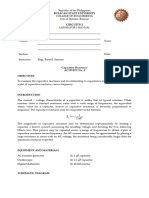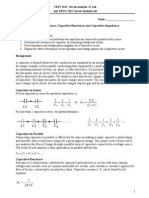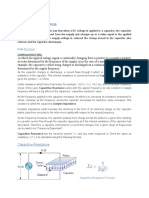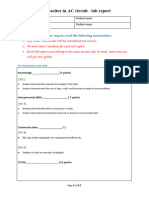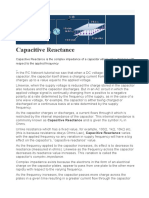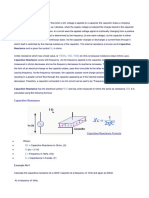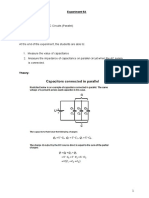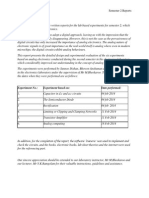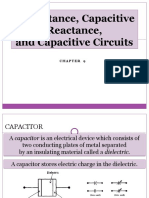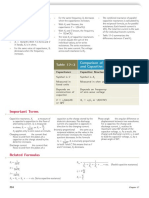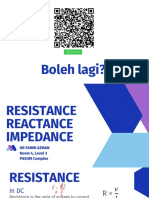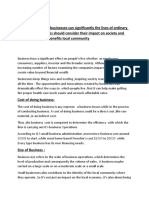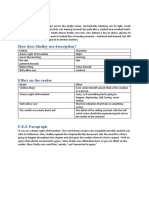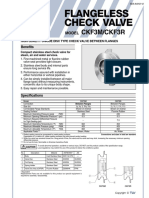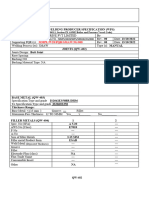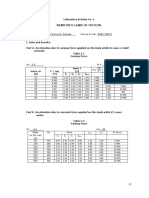0% found this document useful (0 votes)
276 views4 pagesLab 2 - Capacitive Reactance
This document summarizes a lab experiment on capacitive reactance. The objectives were to familiarize students with using capacitors in circuits and measuring how capacitance affects voltage and current. Tables show measured component values compared to stated values. Calculations were made of reactance and capacitance for capacitors in series and parallel. The conclusion restates that capacitive reactance is inversely proportional to capacitance and frequency based on the calculation formula.
Uploaded by
ali basitCopyright
© © All Rights Reserved
We take content rights seriously. If you suspect this is your content, claim it here.
Available Formats
Download as DOCX, PDF, TXT or read online on Scribd
0% found this document useful (0 votes)
276 views4 pagesLab 2 - Capacitive Reactance
This document summarizes a lab experiment on capacitive reactance. The objectives were to familiarize students with using capacitors in circuits and measuring how capacitance affects voltage and current. Tables show measured component values compared to stated values. Calculations were made of reactance and capacitance for capacitors in series and parallel. The conclusion restates that capacitive reactance is inversely proportional to capacitance and frequency based on the calculation formula.
Uploaded by
ali basitCopyright
© © All Rights Reserved
We take content rights seriously. If you suspect this is your content, claim it here.
Available Formats
Download as DOCX, PDF, TXT or read online on Scribd
/ 4










